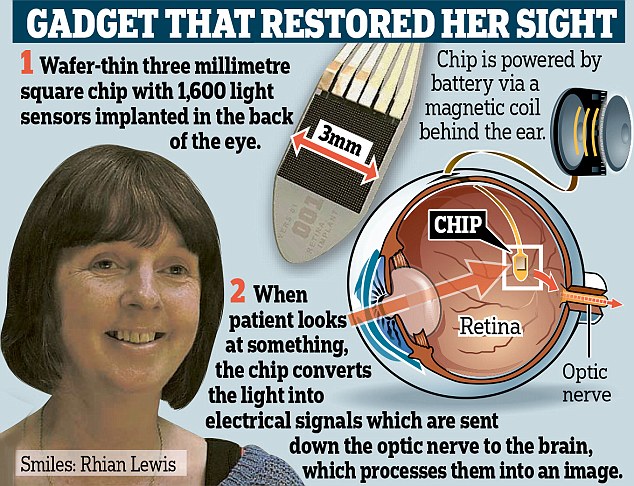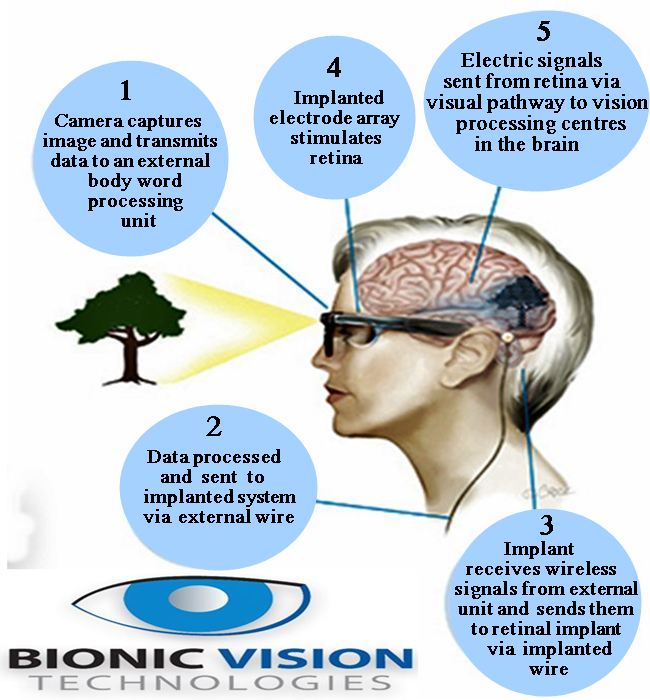Bionic Human and Robots
Robotics
============
Robots are widespread in the manufacturing industry today, but , as yet, they
have not fulfilled the visions of the science fiction writers who conceived them.
Most robotics are designed to mimic the actions of certain parts of the human
body, particularly the arm and hand. Robots that can duplicate the full body
movement of a human being are called androids. For now, they remain purely
experimental.

Robots
==========
The word "robot" comes from the Czech robota, meaning "willing servant".
A modern robot is effectively a mechanical extension of a computer, and as
such it has all the advantages of computerized technology, precision, speed,
and the ability to carry out repetitive tasks perfectly time after time. Apart from
being labor-saving, robots can work in radioactive or toxic environments, and
can perform hazardous tasks such as bomb disposal.
Some robots move using pneumatic (compressed air) or hydraulic systems,
but most use electric stepper motors that rotate in tiny increments to allow
highly precise positioning. The different ranges of movement available are
called degrees of freedom. A robot joint that rotates around a single axis has
one degree of freedom; more complex joints may have two or three degrees
of freedom.

Robot Arms
================
The robot arm is the most widespread type of robot in use today.
The arm uses a series of stepper motors and gears to achieve
many degrees of freedom in its joints. The end of the arm can be
fitted with a variety of tools, called end effectors, which range from
claws to drills. End effectors can be fitted with touch sensors or
other detectors to provide feedback to the controlling computer.

Artificial Intelligence
===================
Most robots today are programmed to simply repeat a series of tasks , or behave
according to instructions from an operator, but in the future they could be given far
greater autonomy. Sophisticated software can provide a machine with a limited
amount of artificial intelligence (AI) , and enable it to learn new patterns and tasks
on the basis of its "experience".
AIBO, a robotic dog built by Sony, is one of the most successful AI robots yet.
It starts life as a puppy, and gradually develops through interaction with its
environment and owner. The result is a robot whose responses can surprise
even its own designers.

Bionic Technology
=================
Replacement body parts have been made for centuries, but until recently they
have minimally functional devices, such as wooden legs and glass eyes. In recent
decades, advances in electronics and materials science , along with an increased
understanding of how our bodies work, have allowed the development of bionic
devices that can fulfill many of the functions of the parts they replace or augment.

Bioglass
=========
When sodium , calcium, and phosphorus are added to silica glass, the result is bioglass,
a composite material that bonds with natural bone through a chemical reaction once it is
placed inside the body. The bioglass pin is just one application. Bioglass is also used for
middle-ear implants, inserting wedges into broken bones, and dentistry.

Bionic Limbs and Arms
=======================
Artificial limbs have come a long way since wooden legs and arms.
Modern designs incorporate sophisticated electronics that enable
them to mimic the responses of a natural limb. Arms may have
sensors which attach to the stump of the limb and detect nerve
signals that would have passed to the hand. Legs have complex
motion detectors and pneumatic actuators that allow them to
respond as the user shifts his or her weight while walking.

Bio-compatibility
=====================
Materials used for implants have to be bio-compatible, so that they will not cause
reactions in the surrounding tissue, and also very hardwearing, to survive for long
periods in the hostile environment of the human body. Many bio-compatible
substances are made of metals such as titanium, composites , or ceramics.
Composites are particularly useful since they can be made in many forms ranging
from fibers to molded shapes.

Bionic Eyes ( Synthesized Image )
==============================
Bionics is the science of replacing or improving human tissue with artificial ,
often electronic, implants. Bionic devices can be external to the body, or partly
or wholly implanted within it. They range from artificial arms and legs that respond
to nerve signals through the wearer's skin, to cochlear implants that replace a
non-functioning cochlea ( a part of the middle ear ) and stimulate the auditory nerve
with electric signals.
Cochlear implants in particular are increasingly widely used, with thousands being
fitted every year. However, implantation in adults who have been deaf for some time
is not very successful because their auditory nerves have degenerated due to lack
of stimulation. Implants in children are much more successful, and can prevent
degeneration of the auditory nerve.
Implanted bionic devices should not irritate or be rejected by body tissues.
Recent advances in the development of bio-compatible materials have
begun to address this problem.
